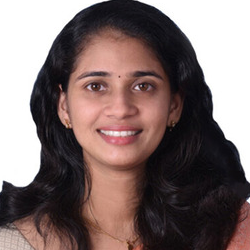Course Objectives:
- To describe the fundamental concepts of electronic components and devices
- To outline the basic principles of an electronic instrumentation system.
- To identify important applications of modern electronics in the contemporary world
Course Outcomes:
After the completion of the course the student will be able to
CO1: Describe the fundamental concepts of electronic components and devices
CO2: Outline the basic principles of an electronic instrumentation system
CO3: Identify important applications of modern electronics in the contemporary world
COURSE SYLLABUS:
MODULE 1
Introduction to Semiconductor devices: Electronic components- Passive and active components – Resistors, Capacitors and Inductors (constructional features not required): types, specifications. Standard values, colour coding. PN Junction diode: – Principle of operation, V-I characteristics. Bipolar Junction Transistors: PNP and NPN structures, Principle of Operation. Digital Electronics: -Binary number system, Boolean algebra and Logic Gates, Universal gates. Basic electronic circuits: – Rectifiers and power supplies: Block diagram description of a dc power supply, working of a full wave bridge rectifier, capacitor filter (no analysis), working of simple zener voltage regulator. Amplifiers: – Transistor as an amplifier, Block diagram of Public Address system
MODULE 2
Electronic Instrumentation: Quality of measurements -accuracy, precision, sensitivity and resolution, Working principle and applications of Sensors – pressure – strain gauge, Bourden gauge, temperature – RTD, thermocouple, proximity – capacitive sensor, ultrasonic sensor and accelerometer. Internet of things (IoT): Introduction, architecture of IoT, Implementation of smart city – street lighting, smart parking.
Text Books (T)
T1. Basic Electronics: Principles and Applications Chinmoy Saha, Arindham Halder and Debarati Ganguly Cambridge University Press 1/e-2018.
T2. Basic Electrical and Electronics Engineering D. P. Kothari and I. J. Nagrath McGraw Hill 2/e- 2020
T3. The Internet of Things: How Smart TVs, Smart Cars, Smart Homes, and Smart Cities Are Changing the World Michael Miller QUE 1/e-2015
T4. Basic Electronics and Linear Circuits N N Bhargava D C Kulshreshtha and S. C. Gupta McGraw Hill 2/e -2017 .
T5. Electronic Communication SYstems Kennedy and Davis McGraw Hill 6/e- 2017
- Reference Books (R)
R1.Electronics: A Systems Approach Neil Storey Pearson 6e- 2017.
R2.Electronic Devices and Circuit Theory Robert L. Boylestad and Louis Nashelsky Pearson 11e 2015.
R3. Principles of Electronic Communication Systems Frenzel, L. E MGH 4e 2016.
R4. Internet of Things: Architecture and Design Principles Raj Kamal McGraw Hill 1/e 2017.
R5.Electronic Communication Dennis Roddy and John Coolen Pearson 4/e 2008.
Curriculum
- 2 Sections
- 11 Lessons
- 10 Weeks
- Module 01MODULE 1 Introduction to Semiconductor devices: Electronic components- Passive and active components - Resistors, Capacitors and Inductors (constructional features not required): types, specifications. Standard values, colour coding. PN Junction diode: - Principle of operation, V-I characteristics. Bipolar Junction Transistors: PNP and NPN structures, Principle of Operation. Digital Electronics: -Binary number system, Boolean algebra and Logic Gates, Universal gates. Basic electronic circuits: - Rectifiers and power supplies: Block diagram description of a dc power supply, working of a full wave bridge rectifier, capacitor filter (no analysis), working of simple zener voltage regulator. Amplifiers: - Transistor as an amplifier, Block diagram of Public Address system.9
- Module 02Electronic Instrumentation: Quality of measurements -accuracy, precision, sensitivity and resolution, Working principle and applications of Sensors – pressure – strain gauge, Bourden gauge, temperature – RTD, thermocouple, proximity – capacitive sensor, ultrasonic sensor and accelerometer. Internet of things (IoT): Introduction, architecture of IoT, Implementation of smart city – street lighting, smart parking.2

